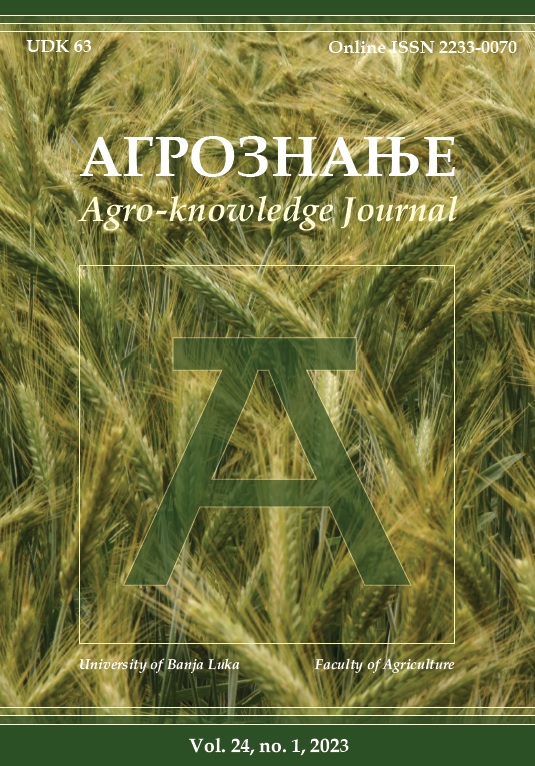Influence of plant covering with nonwoven agrotextile on the vegetative growth characteristics and yield of sweet potato (Ipomoea batatas L.): A Slovenian case study
DOI:
https://doi.org/10.7251/AGREN2301013ZAbstract
The objective of this study was to evaluate the impact of cultivar and covering with nonwoven agrotextile on vegetative growth parameters and the productivity value of sweet potato (Ipomoea batatas L.). A field experiment was conducted during the 2018 growing season, at the experimental field of the Biotechnical Faculty in Ljubljana (46° 04′ N latitude; 14° 31′ E longitude, 305 m above sea level). The soil was gravel clay with a pH of 6.7, and a soil depth of 40–60 cm. The research involved the following Slovenian cultivars of sweet potatoes: Lučka, Janja, and Martina. Distance between rows was 1.2 m, while in-row distance was 1.4 m. The experiment was conducted in a randomized complete block design with plots arranged factorially and replicated four times. The seedlings were planted on 20 May. A half of the plots were covered with polypropylene nonwoven textile (17 g/m2). The uncovered half of the plots served as control plots. The recommended cultural practices were performed as needed during the experiment. The temperature under the covers was on average 5.5 °C higher than in the unprotected area. The crops were harvested 132 days after planting. Covering significantly and positively affected vegetative growth – that is the height of the vines, leaf number, leaf area index, and haulm dry weight. In contrast, the nonwoven polypropylene cover had no significant effect on the number of branches per crop. The use of agrotextile significantly increased tuber length and diameter, tuber number, tuber weight, and total yield in comparison with traditional cultivation with no plant cover. Statistical analysis showed that cv. Janja had the significantly higher yield (7.49 t/ha) compared to cv. Lučka (6.68 t/ha) and cv. Martina (6.16 t/ha).

